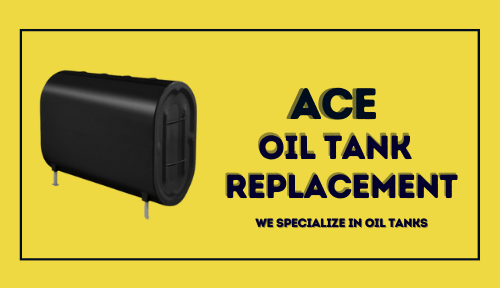Oil Tank Replacement Cost: 7 Mistakes That Add Up Fast
Introduction: Why Oil Tank Replacement Costs Can Spiraloil tank replacement oil
What starts as a routine tank upgrade can easily turn into a financial fiasco. Between hidden fees, poor decisions, and overlooked regulations, even well-meaning homeowners can rack up costs fast. Let’s dissect the common mistakes that spike oil tank replacement expenses—and how to sidestep them.
Mistake #1: Ignoring Early Warning Signs of Tank Failure
A faint fuel smell. Dark stains near the base. Rust rings forming like shadows under the tank. These aren’t minor annoyances—they’re distress signals. Ignoring them can lead to catastrophic leaks and higher costs due to environmental remediation.
Mistake #2: Delaying the Replacement Too Long
Time is not your ally when corrosion begins. Delaying replacement may seem harmless, but the costs of cleanup, contamination control, and possible municipal penalties can dwarf the original quote. Acting early could save you tens of thousands.
Get a free quote
Roth oil tank pg
Mistake #3: Not Getting Multiple Bids
A single quote doesn’t tell the whole story. Getting at least three estimates helps you uncover outliers, hidden costs, and whether your quote is inflated. It also gives leverage when negotiating with top-tier companies.
Mistake #4: Choosing Price Over Experience
That ultra-cheap contractor might not have insurance, licensure, or the tools to handle surprises like inaccessible basement installs or environmental hazards. Pay a little more upfront, or a lot more cleaning up their mess.
Mistake #5: Overlooking Permits and Local Codes
Skipping required permits is an invitation to fines, project delays, and red-tag orders. A reputable contractor like Ace Oil Tank Replacement will navigate these red-tape requirements so you don’t have to.
Mistake #6: Forgetting to Budget for Oil Disposal
Removing a tank full of residual heating oil isn’t free. Disposal requires certified handling and may involve separate hauling and hazmat fees. Budgeting for this ahead of time avoids invoice sticker shock later.
Mistake #7: Installing the Wrong Tank for Your Needs
Too large? You’ll overpay for fuel you don’t need. Too small? Frequent refills drive up your yearly energy costs. A steel tank when plastic would’ve sufficed? That’s a long-term corrosion risk. Tank choice matters.
Bonus Tip: Not Getting a Written Warranty
Verbal promises vanish. You need a written guarantee that covers both labor and parts. Look for clarity, not loopholes.
How Hidden Site Conditions Can Add Costs
Think bedrock under your lawn is rare? Think again. Obstructions like concrete slabs, buried roots, or steep access angles increase labor time and equipment fees. A site inspection can help expose these variables early.
Why Basement Tanks Are Often Pricier to Replace
Basements introduce logistical hurdles—tight corners, narrow stairways, and heavy lifting up or down levels. This complexity translates directly to more labor hours.
The Difference Between Above-Ground and In-Ground Tank Costs
Above-ground tanks are easier to install and service. In-ground systems often involve excavation, soil testing, and higher replacement risk due to corrosion—all of which escalate your bill.
The Role of Oil Tank Insurance (And What It Doesn’t Cover)
Some homeowners mistakenly assume their policies cover oil tank replacements. In reality, many exclude older tanks or only cover surface damage. Verify this in writing with your insurer.
How an Environmental Spill Skyrockets the Cost
Leaks trigger a chain of expenses: environmental reports, soil remediation, possible water testing, and legal documentation. These situations quickly move your bill into five-digit territory.
When You Need a Tank Removal AND Replacement
You’re not just installing a new tank—you’re dismantling an old one. That involves permits, disposal fees, transportation logistics, and safe fuel transfer. Prepare your budget accordingly.
Beware of “Free” Estimates That Aren’t Really Free
Some companies advertise no-cost assessments, then charge hidden “mobilization” or “travel” fees after you sign. Trust firms that disclose everything upfront, like Ace Oil Tank Replacement.
Understanding Real 2025 Price Ranges
In 2025, expect to pay anywhere from $2,500 to $5,200 for a full residential oil tank replacement. Add-ons like custom tank pads, fuel transfers, or line replacements increase this range. In-ground replacements can push past $7,000.
How Ace Oil Tank Replacement Protects Your Budget
With flat-rate pricing, no hidden surcharges, and full disclosure upfront, Ace Oil Tank Replacement remains a trusted name throughout Massachusetts. Their licensed team ensures fast, code-compliant installs—without financial ambushes.
Questions to Ask Any Oil Tank Replacement Contractor
- Are you licensed and insured in MA?
- Will you provide a written estimate and timeline?
- Does your price include permits and fuel disposal?
- What type of warranty do you offer?
Call to Action: Replace Smarter with Ace Oil Tank Replacement
Don’t let hidden mistakes inflate your project cost. Trust Ace Oil Tank Replacement for reliable, budget-friendly
service.
📞 Call 413-241-6720 or visit www.aceoiltankreplacement.com to request a no-obligation quote today.

